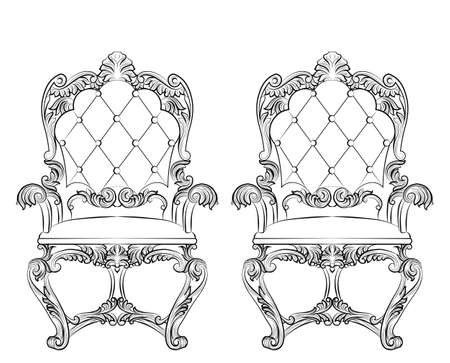Welcoming the Victorian Spirit
Step inside a world where elegance and tradition meet—the Victorian dining room, a true cornerstone of British heritage. The very essence of Victorian interiors lies in their ability to blend formality with warmth, making every meal an occasion and every gathering a memory. These remarkable spaces were once the heart of grand homes, echoing with laughter, lively conversation, and the clinking of fine china. Today, they remain a source of timeless inspiration, inviting us to rediscover the rich detailing and thoughtful design that defined an era. As we embark on this journey through period detailing, let’s set the scene for how Victorian dining rooms continue to shape our understanding of British culture—celebrating craftsmanship, ritual, and the simple joys of coming together around the table.
Architectural Hallmarks and Period Features
Stepping into a Victorian dining room is like entering a carefully curated world of period detail, where every architectural hallmark tells its own story. The grandeur begins overhead with high ceilings, an iconic feature in many British Victorian homes. These ceilings not only amplify the sense of space but also provide a canvas for intricate plasterwork, often found in the form of decorative cornices and ceiling roses. Such details were as much about showcasing craftsmanship as they were about expressing status and taste.
The dining room’s walls and boundaries are typically adorned with ornate cornices, adding depth and definition to the space. These decorative mouldings, sometimes paired with dado rails or picture rails, create structured layers that frame the room beautifully. The interplay between these elements and natural light from tall sash windows enhances the atmosphere, making mealtimes feel both refined and inviting.
| Victorian Detail | Description | Typical Materials |
|---|---|---|
| High Ceilings | Adds vertical drama; allows for larger windows and more light | Plaster, timber beams (occasionally exposed) |
| Decorative Cornices | Ornate plasterwork at wall-ceiling junctions; defines room edge | Plaster, occasionally wood |
| Statement Fireplaces | Central feature, often with tiled surrounds and carved mantels | Cast iron, marble, ceramic tiles |
| Sash Windows | Tall windows allowing abundant daylight; often with original shutters | Timber frames, glass panes |
No discussion of Victorian dining rooms would be complete without mentioning the statement fireplace. Usually occupying pride of place on one wall, these fireplaces were as much about warmth as they were about display. Think cast iron grates, tiled inserts in rich hues, and elaborately carved wooden or marble mantels—each piece echoing the Victorian love for bold yet harmonious design. These original features remain highly sought after today by those wishing to preserve or restore authentic period character in their homes.

3. Colour, Pattern, and Wallpaper
Step into any authentic Victorian dining room and you are immediately greeted by an embrace of opulence and character, much of which is achieved through the careful use of colour and pattern. The Victorians were renowned for their bold approach to interiors, opting for deep, sumptuous hues that evoke a sense of history and sophistication. Think rich emerald greens, regal burgundies, and navy blues—each shade chosen not only for its dramatic impact but also for the warmth it brings to communal spaces.
Wallpaper was a true hallmark of Victorian taste, often adorned with intricate floral motifs, damasks, or even exotic scenes inspired by travels abroad. These patterns were not mere decoration; they told stories and reflected the homeowner’s status and interests. Today, choosing a classic William Morris print or a heritage-inspired pattern can instantly evoke that period charm while providing a tactile layer to your dining room walls.
Layering is key in this style. Pair bold wall colours with patterned wallpaper panels or dado rails to break up expanses of colour and add depth. Consider how these elements interact with other finishes in the room: dark wood wainscoting or ornate cornices can frame your wallpaper beautifully, creating a harmonious yet visually rich environment.
For a more understated nod to Victorian design, select muted jewel tones as your base and introduce pattern through textiles—think heavy velvet curtains or tapestry-style chair cushions. This approach balances modern sensibilities with period authenticity, allowing you to enjoy the cosiness and grandeur that define a true Victorian dining experience.
4. Furniture with Grandeur
Stepping into a Victorian dining room is like entering a world where craftsmanship takes centre stage and every piece of furniture tells a story of elegance. The heart of these spaces lies in their choice of tables, sideboards, and seating—each carefully selected to reflect the opulence and timelessness of Victorian tradition. Let’s take a closer look at the hallmarks of quintessential Victorian dining furniture and how these elements can inspire your own period-inspired space.
Signature Dining Tables
The Victorian dining table is nothing short of majestic. Traditionally crafted from rich, dark woods such as mahogany or walnut, these tables often feature intricate carvings, turned legs, and substantial dimensions—perfect for family gatherings or dinner parties that stretch long into the evening. Extendable leaves were also a common feature, allowing hosts to adapt to their guest lists with grace.
| Feature | Description |
|---|---|
| Wood Type | Mahogany, walnut, oak |
| Detailing | Hand-carved motifs, ornate edging, turned or cabriole legs |
| Functionality | Extendable leaves for flexibility |
Sideboards: Storage Meets Display
No Victorian dining room would be complete without an imposing sideboard. These pieces not only provided essential storage for fine china and silverware but also served as focal points for decorative displays. Look for sideboards with mirrored backs, intricate inlays, and brass handles—each detail echoing the era’s love for both function and flourish.
Traditional Seating Arrangements
Victorian chairs are easily recognised by their high backs, upholstered seats (often in rich velvets or damasks), and detailed woodwork. Chairs were designed not just for comfort but to complement the grandeur of the table itself. A blend of carver chairs at each end and armless dining chairs along the sides was typical, creating a sense of hierarchy and balance around the table.
| Seating Style | Typical Features | Common Materials |
|---|---|---|
| Carver Chair (Armchair) | High backrest, arm supports, deep carving | Mahogany frame, velvet upholstery |
| Dining Chair (Side chair) | Slimmer profile, no arms, matching carving details | Walnut frame, patterned fabric seat |
The Lasting Appeal of Ornate Craftsmanship
The enduring charm of Victorian dining furniture lies in its attention to detail—from hand-carved acanthus leaves to beautifully turned finials. Whether you’re seeking to recreate an authentic period look or add just a touch of historical flair to your home, focusing on these grand designs in dark woods ensures your dining room exudes warmth and sophistication rooted in British heritage.
5. Meaningful Table Setting and Accessories
When curating a Victorian-inspired dining room, the table setting is much more than a practical necessity—it is an essential opportunity to showcase period authenticity and a touch of everyday British elegance. The Victorians were known for their attention to detail, especially when it came to hosting and presentation. By thoughtfully selecting tableware, glassware, and textiles, you can recreate that timeless sense of occasion in your own home.
Showcasing British Tableware
True Victorian dining rooms often featured quintessentially British ceramics and porcelain. Look for classic patterns such as Blue Willow or transferware plates, which immediately evoke that storied heritage. Layering mismatched yet complementary pieces adds character while still feeling refined. Don’t overlook the power of a well-chosen teapot or silver-plated cutlery set—these tactile objects are both functional and full of narrative charm.
Vintage Glassware for Every Occasion
Elegant glassware was—and remains—a staple in British dining culture. Seek out etched crystal wine glasses, hand-cut tumblers, or even coloured Victorian-style goblets for a subtle nod to the era’s lavish entertaining style. Displaying these vintage finds on a sideboard or drinks trolley not only keeps them accessible but also transforms them into decorative features when not in use.
Textile Choices with Period Charm
No Victorian table is complete without well-chosen linens. Crisp white damask tablecloths, delicately embroidered napkins, and patterned runners all conjure up images of carefully laid tables ready for a family gathering or evening soiree. For added authenticity, consider layering lace doilies or using heavy cotton placemats in muted hues that echo the natural palette favoured during the period.
By integrating these thoughtful touches—classic British tableware, vintage glassware, and evocative textiles—you invite both history and hospitality into your dining room. The result is a space that feels welcoming for daily meals yet effortlessly elevates special occasions with true Victorian flair.
6. Blending Period Detail with Modern Living
Creating a Victorian-inspired dining room in a modern British home is all about striking the right balance between timeless character and everyday practicality. The aim is to celebrate the ornate features and craftsmanship of the era, while ensuring your space remains comfortable and functional for contemporary living. Here are some tips to help you seamlessly blend period detail with today’s lifestyle:
Respect the Architecture, But Don’t Be Afraid to Adapt
If you’re lucky enough to have original Victorian features such as cornicing, ceiling roses, or fireplaces, make them the focal point of your dining room. However, don’t feel obliged to replicate every historic detail—sometimes, simplifying mouldings or painting dark woodwork in lighter tones can freshen up the space while still honouring its roots.
Mix Old and New Furnishings
Pairing antique dining tables or sideboards with modern chairs is a clever way to introduce comfort and style without losing the period vibe. Consider reupholstering Victorian chairs in contemporary fabrics or using sleek lighting fixtures above a traditional table to create visual interest.
Choose Practical Flooring
Victorian homes often featured patterned tiles or hardwood floors. In today’s dining rooms, durable engineered wood or hardwearing luxury vinyl tiles in heritage patterns can offer both beauty and easy maintenance—ideal for busy households.
Incorporate Modern Comforts Thoughtfully
Central heating, double glazing, and discreetly integrated technology like smart speakers or concealed charging stations will keep your dining space inviting without detracting from its historical charm. Soft furnishings like plush rugs and velvet curtains add warmth and echo Victorian tastes while enhancing cosiness.
Accessorise with Restraint
Edit your decorative choices: display a few cherished heirlooms or vintage finds alongside contemporary ceramics or abstract art. This curated approach prevents the room from feeling fussy, ensuring it remains welcoming for both family meals and gatherings with friends.
Ultimately, blending Victorian detail with modern living is about thoughtful editing and personal touches. By respecting history but embracing present-day needs, you can create a dining room that’s rich in character yet thoroughly suited to life in a twenty-first-century British home.

